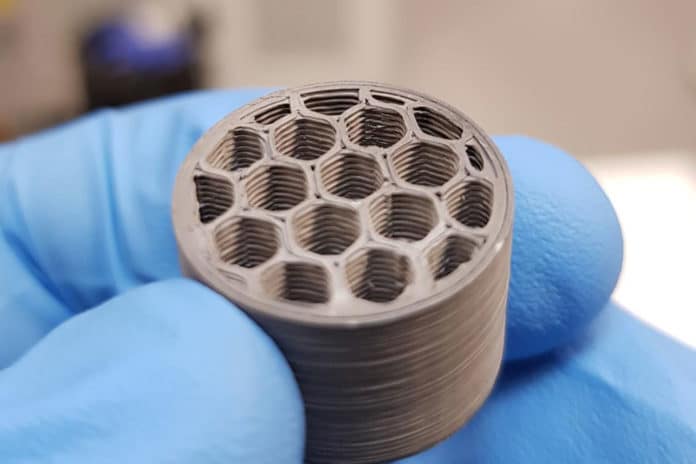Tech Explorist By Ashwini Sakharkar February 19, 2022
 Hydrogen peroxide will be pushed through the catalyst structure testing its efficiency to turn liquid hydrogen peroxide into a propellant.
Hydrogen peroxide will be pushed through the catalyst structure testing its efficiency to turn liquid hydrogen peroxide into a propellant.A University of Canterbury Engineering student- Simon Reid- is interested in the intersection of 3D printing and aerospace. Currently, he is working on a 3D printed catalyst bed that allows more efficient use of concentrated hydrogen peroxide as a propellant for rockets requiring low to medium thrust.
Simon coated the surface of the ceramic catalyst with the catalyst for hydrogen peroxide to pass through.
Simon explains, “Bypassing liquid hydrogen peroxide over a catalyst bed speeds up the decomposition reaction. The reaction disassociates the molecule, turning it into water and oxygen. The breakup of the molecule produces a large amount of energy and heat. The heat vaporizes the water and results in a high-temperature gas – passing the hot gas through a nozzle provides thrust.”
Simon said, “The shape I’m using is called a gyroid. It’s a mathematical shape, more optimal for catalytic processes, and cannot be manufactured using traditional techniques.”
By using gyroid, Simon wants to overcome three things:
1. Loss of catalyst
2. Large pressure drop
3. Maximizing thrust balanced against the concentration of hydrogen peroxide.
More:
https://www.techexplorist.com/turning-hydrogen-peroxide-non-toxic-rocket-fuel-using-3d-printing/44853/https://en.wikipedia.org/wiki/Gyroid